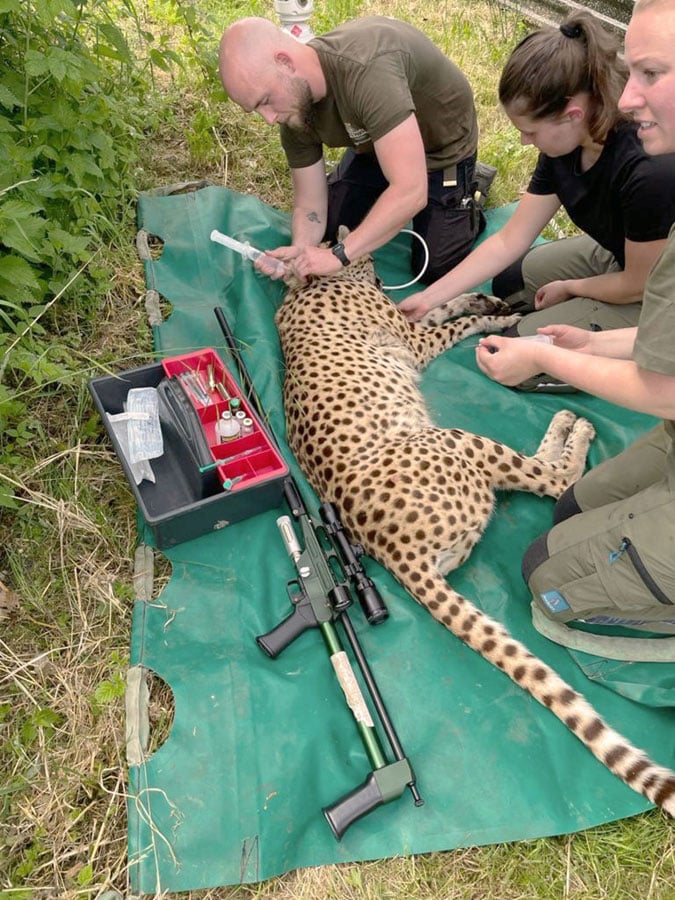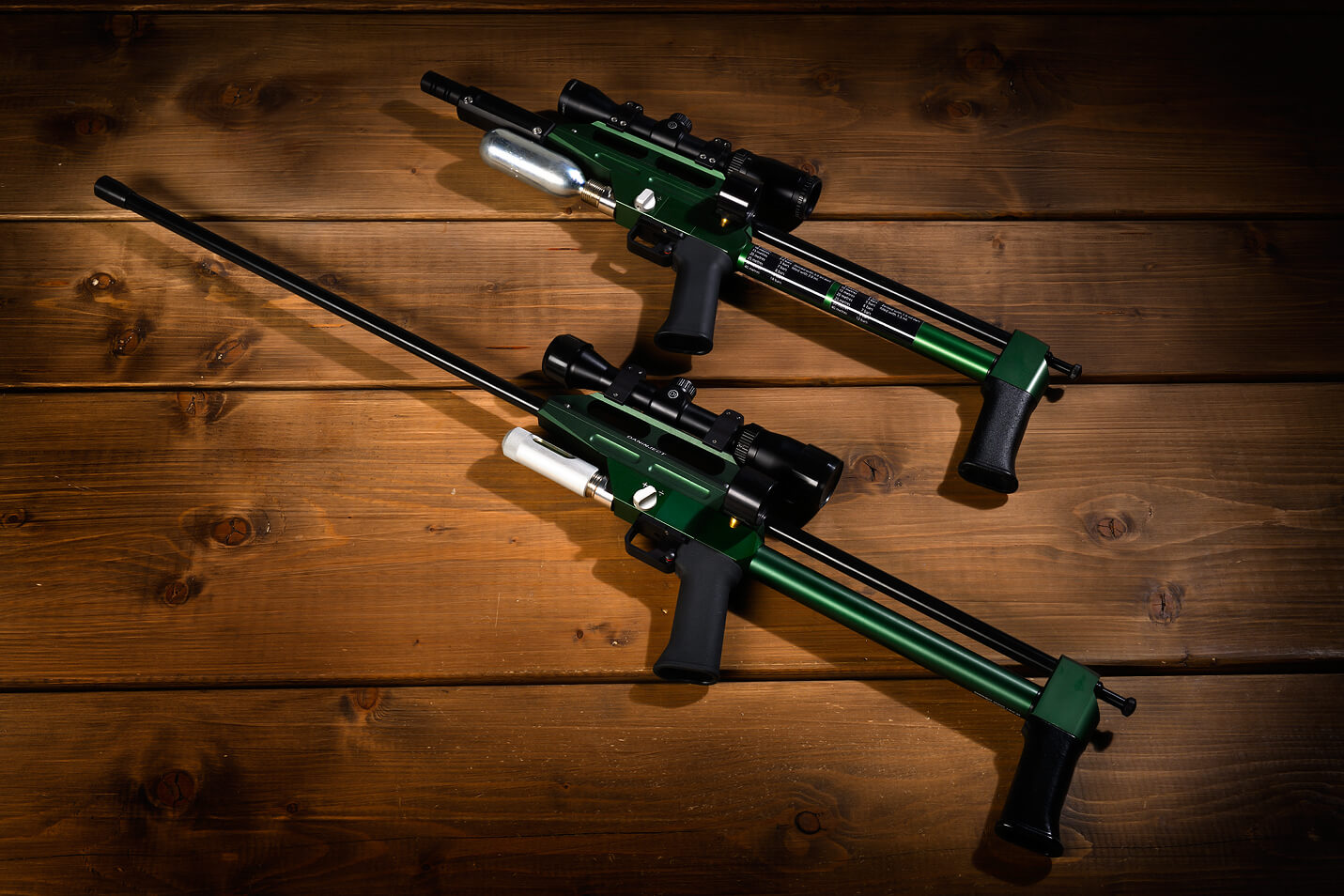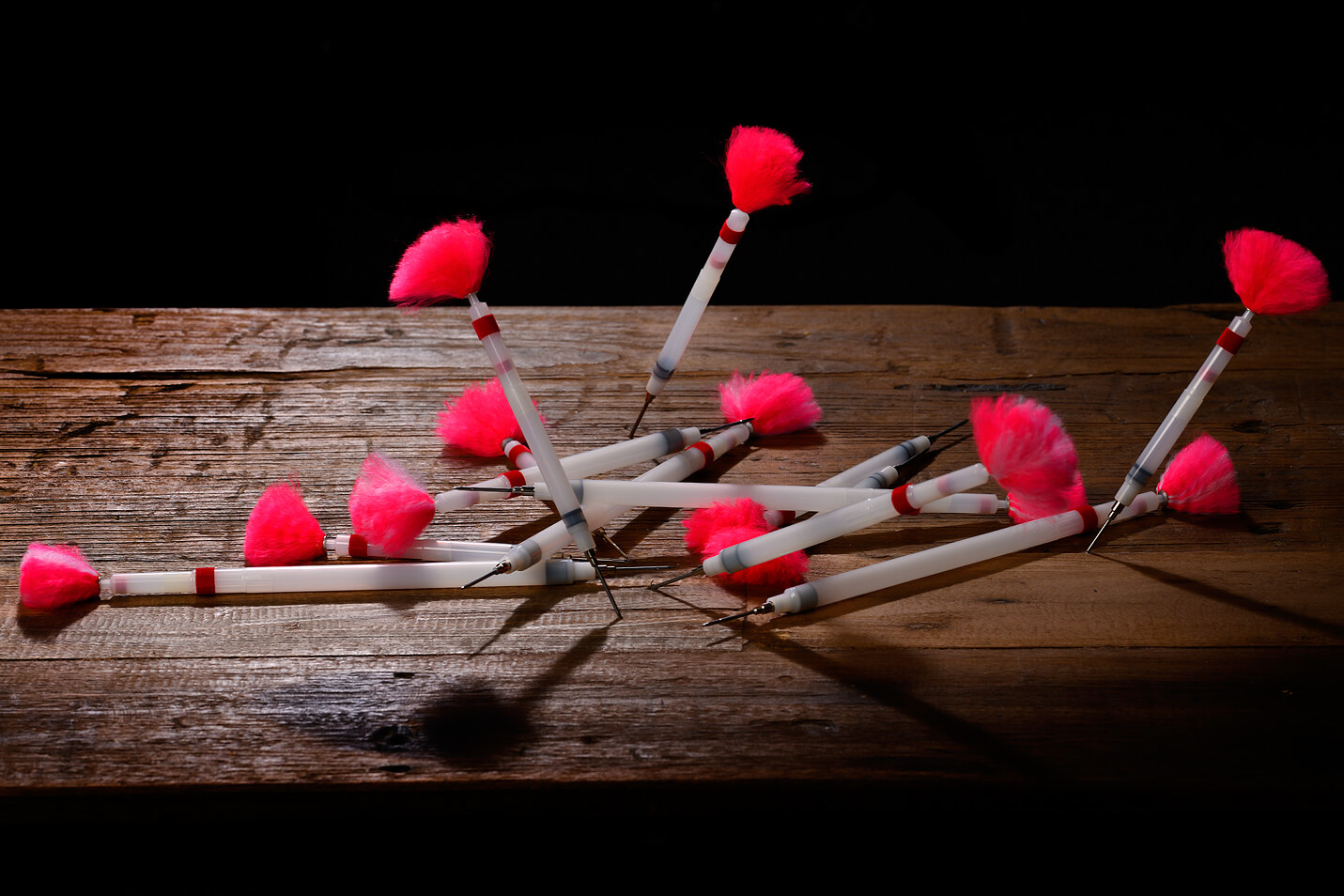Selecting the appropriate dart and needle for animal immobilization or treatment will ensure the effectiveness of the procedure and minimize stress and potential harm to the animal.
Some of the important factors to consider are:
Animal size and species
Larger animals often require darts with a larger volume to deliver an adequate dose of the active agent. On the other hand, smaller animals normally need darts with a smaller volume.
Animal species all have varying skin thickness, fur characteristics, and muscle density, which will influence the choice of needle length and gauge. For example, a thick-skinned species like a rhinoceros will require a different needle compared to a thin-skinned species like a dik-dik antelope.
The same animal can even require different needles depending on the time of year. For example, a bear with a thick winter coat and fat deposits will require a longer needle than if the immobilization is done in the summertime.
Drug, chip, transmitter, or biopsy
The physical properties of the drugs in use (the viscosity) can affect the choice of dart and needle, as some drugs may require a larger gauge needle for efficient delivery. The volume of the dart should of course match the required dose of the drug, ensuring that the entire dose preferably can be administered in one dart only.
The choice of dart and needle will also depend on the task at hand. If the aim isn’t sedation, but marking the animal with a chip, placing a transmitter, or maybe taking a biopsy, this will define the requirements for dart and needle.
The type of needle
The length of the needle should be sufficient to penetrate the animal's skin and deliver the drug into the muscle or subcutaneous tissue.
It should, however, not be so long as to risk hitting bone or penetrating too deeply, potentially causing internal damage.
A larger gauge (thicker needle) or double exit hole needle may be required for delivering viscous drugs or for penetrating thick skin, while a smaller gauge (thinner needle) can be used for thin-skinned animals and less viscous drugs.
Securing animal welfare
The choice of needle is also important for animal welfare. It’s important to choose needles that have the least possible impact on the animal but still get the job done.
Barbed versus non-barbed needles will often be a consideration. Barbed needles are designed to stay in place once they penetrate the skin, ensuring that the full dose is delivered. However, they can cause more skin damage upon removal. Non-barbed needles may fall out more easily, risking incomplete drug delivery but typically cause less damage.
In general, there are 4 categories of needles to choose from:















